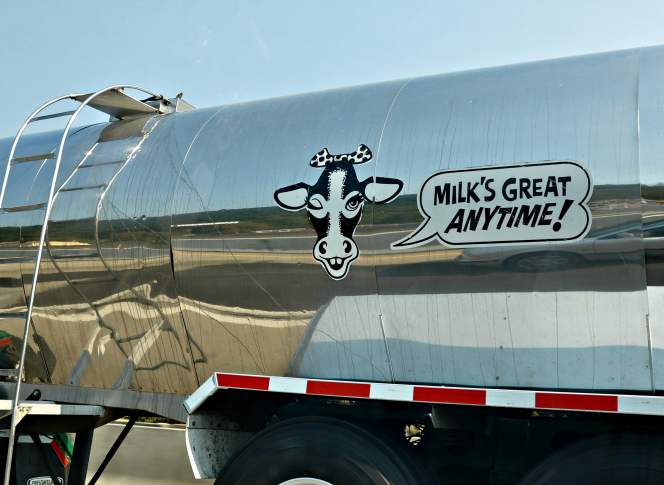Why Milk Producers Get Whip-Sawed By Price Changes
High prices are a signal from customers indicating that they demand more product. In 2014, dairy farmers in Wisconsin and the rest of the U.S. received the highest prices for milk on record, signaling a demand that the world wanted more dairy products.
December 19, 2016

Shiny side of milk truck

High prices are a signal from customers indicating that they demand more product. In 2014, dairy farmers in Wisconsin and the rest of the U.S. received the highest prices for milk on record, signaling a demand that the world wanted more dairy products. Profit from that year provided farmers the wherewithal to produce even more, leading to 45,000 individual commitments to send milk to the U.S. market.
But this production response was excessive and the market was soon over-supplied. In 2015 and 2016, farmers in northeastern U.S. states dumped milk because the region lacked dairy plant capacity to process all of the locally produced milk. Michigan also produced considerably more milk than plants in that state could process. However, proximity allowed much of that excess to be shipped to Wisconsin, finding a home in the state’s cheese plants.
The supply of excess milk had the opposite effect of what happened in 2014, though, leading to a decline of about 30 percent in the farm price.
The dairy industry is a classic example of an uncoordinated supply chain. Individual dairy farmers fail to perceive just how much more product a market can absorb, and they do not have a formal mechanism to discipline their production response. For instance, Apple has a fairly good idea what the demand for its new iPhone models will be and does not produce more of them than is wanted. There are more automakers than there are cell phone manufacturers, but same is true for Ford or General Motors, which try to understand their competition and the likelihood of sales for each model of their product lines. These are well-coordinated supply chains.
The dairy industry gets whip-sawed by price changes roughly every three years. In response, storable dairy products are a buffer against surplus or deficit milk production. When milk supplies are tight, as they were in 2014, stocks of cheese and butter are reduced. And when milk supplies are in surplus, inventories rise from normal levels. By August 2016, stocks of natural cheese in the U.S. were about 200 million pounds higher than they were in the same month of 2014. In Wisconsin, cheese production continues to grow, with output levels in October 2016 about 6 percent higher than in 2014. This plenitude is a strong indicator of a problem — like the canary in the coal mine.
In October 2016, U.S. Department of Agriculture Secretary Tom Vilsack visited Wisconsin to announce the department had authorized $20 million to purchase cheese to help shore up milk prices. Any such effort is a nudge in the right direction, but probably no more than a nudge. That much funding can purchase maybe 10 million pounds of cheese, which would serve to reduce the surplus stocks by no more than perhaps 5 percent.
Milk price volatility is a significant issue for Wisconsin dairy farmers, and it disrupts their businesses. This pattern is a consequence of an uncoordinated supply chain and it will be difficult to overcome.To adapt to these fluctuations, dairy farmers will need to consider their milk production responses more specifically, or they will need prepare to financially manage their way through low milk price cycles.
Market prices are just beginning to recover, but it will take many more months of better prices before dairy farm profits return to anything like more normal levels.
Mark Stephenson is the director of the Program on Dairy Markets & Policy at the University of Wisconsin-Madison, director of the UW Center for Dairy Profitability and a dairy policy analyst for UW-Extension.
 Passport
Passport











Follow Us